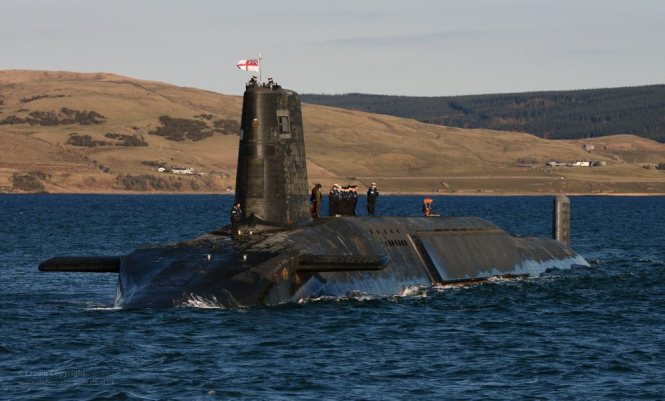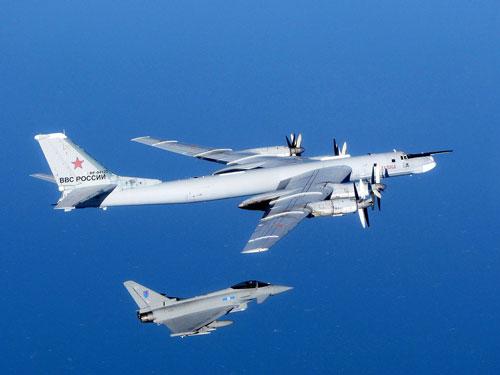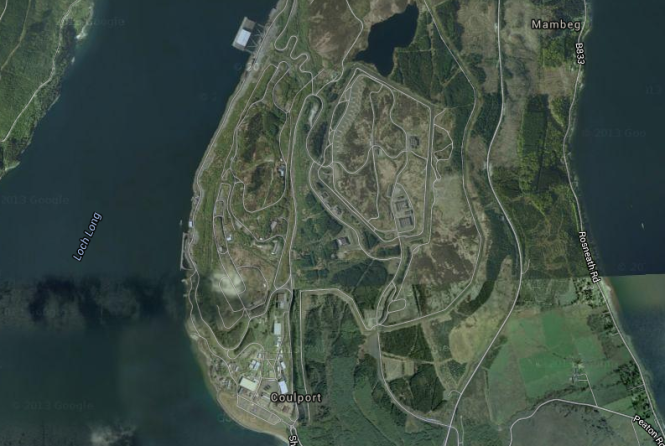What is Trident?
The word Trident is commonly used to describe the entire UK nuclear weapon system, although really it refers only to the Trident missile system which carries the UK’s nuclear weapons, currently the Trident D5. Up to 16 Tridents can be carried by each of the Royal Navy’s four Vanguard-class ballistic missile submarines (SSBN), and within each missile rests up to 8 independently targetable nuclear warheads.

HMS Victorious, a Vanguard class ballistic missile submarine | Crown Copyright
The renewal of the UK’s nuclear deterrent is often referred to as Trident renewal, but the renewal currently proposed is of the submarines only, as the Vanguard-class is nearing the end of its service life. The Trident missiles and their warheads will remain effectively the same.
Is Trident independent?
A commonly peddled myth is that the UK’s nuclear deterrent is not independent, that it requires permission from the United States to fire.
This is untrue.
Although, as a very close ally and a member of NATO, it’s likely any possible nuclear launch would be discussed with the USA, the final decision rests solely with the Prime Minister. The US have no way to stop or prevent an independent UK missile launch.
An additional facet to this myth is that Trident relies on US controlled global positioning system (GPS) satellites for guidance. Again, an untrue statement. Trident guides itself using a combination of inertial and celestial navigation systems. And while GPS could be used to enhance its accuracy, it would be very risky to trust the guidance system of a nuclear weapon to an outside source that is as vulnerable to jamming as GPS is.
It is true that a lot of the UK’s Trident missiles are kept and maintained at a storage facility in Virginia, USA, along with some of the US Navy’s stock of Tridents, but as at least one Vanguard class is permanently on patrol with nuclear weapons then this has little effect on the UK’s nuclear capability. Theoretically, if the USA withdrew long term support for Trident then the UK may lose access to any missiles stored in the USA. However, given how long the agreement has existed, coupled with the close relationship between the two nations, this is a very unlikely scenario.
What is Trident for?
The best weapon is one you never have to fire.
Trident is a nuclear deterrent. In essence, it is designed to prevent itself ever needing to be fired.
Think of a Mexican stand-off. If one person fires their gun, then everyone dies. Deterrence works in a similar way. While a number of countries maintain a deterrent, then nuclear war remains a scenario that no-one can win, thereby making it a less attractive strategy.
You might say, well why would anyone fire a nuclear weapon in the first place?
It’s a common thought among many that nuclear weapons are relegated only to near apocalyptic uses, striking cities and killing millions of people. In reality, a lot of nuclear weapons have been developed specifically to counter military targets. In addition to the widely known nuclear bombs and nuclear missiles, there have been nuclear depth charges and torpedoes, developed to cripple fleets of ships and submarines, there have been nuclear weapons designed for use on a battlefield, small enough to fit on a portable mortar. It’s these types of nuclear weapon that, I believe, are most likely to be used. If countries disarm unilaterally, where will the deterrent to using nuclear weapons in this way be?

M-28/M-29 Davy Crockett recoilless gun, loaded with an M-388 nuclear projectile. These weapons were deployed by US forces in Germany during the Cold War | US Department of Defense
Who are nuclear threats to the UK?
The question in nuclear deterrence is less of a “who are we deterring?” and more of a “what are we deterring?”, with the answer being any usage of nuclear weapons.
There are some answers to a “who?” question though.
The state of North Korea recently (at the time of writing) claimed to have detonated their first hydrogen bomb. I don’t think North Korea are a direct threat to the UK, but as I’ve said, our deterrent is there to deter all nuclear war, and with a nuclear armed North Korea and a young leader looking to prove his authority, Japan and South Korea are targets within easy reach.
Closer to home, a resurgent Russia is gradually rebuilding its armed forces, including nuclear arms. Flights near NATO airspace have increased to Cold War levels once more, with the RAF’s Typhoon FGR.4s scrambling 8 separate times when Russian strategic bombers flew within the UK’s area of interest. Combine this with the Russian President, Vladimir Putin, stating he has not ruled out the usage of nuclear weapons in Syria, and it is clear although nuclear war might not be imminent, it is wise to keep one’s guard up, rather than let it down.

A Typhoon FGR.4 from 6 Squadron, RAF Lossiemouth, intercepts a Russian Air Force Tupolev Tu-95 strategic nuclear bomber off the coast of Scotland in 2014 | Crown Copyright
Is the money not better spent on the NHS or education?
This question can be answered quite quickly.
Using figures often reported by the Campaign for Nuclear Disarmament (CND), the new class of submarines will cost £167 billion to operate over their expected lifetime, which will be 30-40 years (working out at about £5 billion per year). Over 30 years the NHS will cost at least £3 trillion.
In no way am I saying the NHS should have their funding cut, quite the opposite, they’re an excellent institution, I’m simply using its cost as a comparison. On a government scale, the cost of Trident is a drop in the water.
Are there cheaper alternatives?
Yes, kind of.
There are many ways of maintaining a nuclear deterrent for less money than renewing Trident, but they all come with their individual drawbacks.
A cruise missile based deterrent could be air launched or submarine launched. However, the range of most cruise missiles is very short compared to intercontinental ballistic missiles (ICBMs) like Trident. They also travel much slower, presenting themselves as easier targets for defence systems, whereas the warheads from Trident travel at up to 18000 miles per hour during re-entry. The UK already possesses non-nuclear cruise missiles in the form of BGM-109 Tomahawks, which are launched from Astute class and Trafalgar class submarines, as well as the Storm Shadow, launched from the Tornado GR.4 and in future the Typhoon FGR.4. Neither of these missiles currently have a nuclear warhead available, so there would be an added cost of development should the UK switch to a cruise missile deterrent.

A Tornado GR.4, with two Storm Shadow cruise missiles fitted under the fuselage | Crown Copyright

BGM-109 Tomahawk cruise missile | US Navy
An aircraft based nuclear deterrent suffers two of the same issues as cruise missiles; range and vulnerability. By the time aircraft carrying a prospective UK nuclear deterrent (for example, F-35Bs with B61 nuclear bombs) have deployed to an area within range of their target, days could have passed since they were directed to deliver nuclear weapons. Unlike the US Air Force, the Royal Air Force has neither the budget nor the infrastructure to maintain huge fleets of strategic bombers and aerial refuelling aircraft.
Silo based deterrents usually utilise ICBMs, similar to Trident, so for range and vulnerability they score highly. The drawback to this solution though, is the size of the UK. Where would the silos be built? Very few people will want even one silo in their area. The USA has the advantage of huge swathes of sparsely populated land where they can maintain their silos, the UK does not have this luxury. Also, as silos would be expensive to build, and the need to procure new land based ICBMs, the cost could quite easily run just as high as renewing Trident.
So, to summarise:
Are there cheaper alternatives? Yes.
Are those cheaper alternatives as effective and credible as Trident? No.
Are the UK’s nuclear weapons illegal?
No.
Quoting from the Nuclear Non-Proliferation Treaty (NPT):
Article VI
Each of the Parties to the Treaty undertakes to pursue negotiations in good faith on effective measures relating to cessation of the nuclear arms race at an early date and to nuclear disarmament, and on a treaty on general and complete disarmament under strict and effective international control.
Nothing there forbids current nuclear countries to maintain their deterrents, nor does it call for unilateral disarmament, it calls for negotiations towards multilateral nuclear disarmament.
These negotiations have already taken place in multiple guises. Both the USA and USSR reduced the size of their nuclear forces in the Strategic Arms Limitation and Strategic Arms Reduction treaties.
The UK’s nuclear stockpile is the lowest it has been in decades. The UK is also the only nation to maintain only one part of the nuclear triad (air launched, submarine launched, silo launched), after the WE.177 free fall nuclear bomb was retired from service in 1998.
While in a perfect world, everyone might agree to disarm, in the real world, while countries like North Korea have access to nuclear weapons, while India and Pakistan each maintain nuclear weapons, while Russia is modernising its nuclear stockpile, that conclusion is unlikely at best.
Where are the UK’s nuclear weapons and submarines based?
The Royal Navy’s fleet of Vanguard SSBNs are based at HMNB Clyde in Scotland, along with the Astute class SSN. Maintenance for these submarines can also be carried out at HMNB Devonport, where the fleet of Trafalgar class SSNs are based.
The UK’s main nuclear weapons storage area is adjacent to HMNB Clyde, at RNAD Coulport. The complex, which is partly underground, has facilities to store a number of Trident ICBMs, as well as the nuclear warheads that would be fitted onto them. The base is also a storage area for a large number of the Royal Navy’s conventional weapons.

RNAD Coulport satellite image | Google Maps
The warheads themselves were built by the Atomic Weapons Establishment (AWE), who have large facilities are Aldermaston and Burghfield. It is likely that a number of the warheads are also stored at these facilities as well as in Scotland.
If you have any additional questions that you feel should be answered here, feel free to suggest it in the comments.
